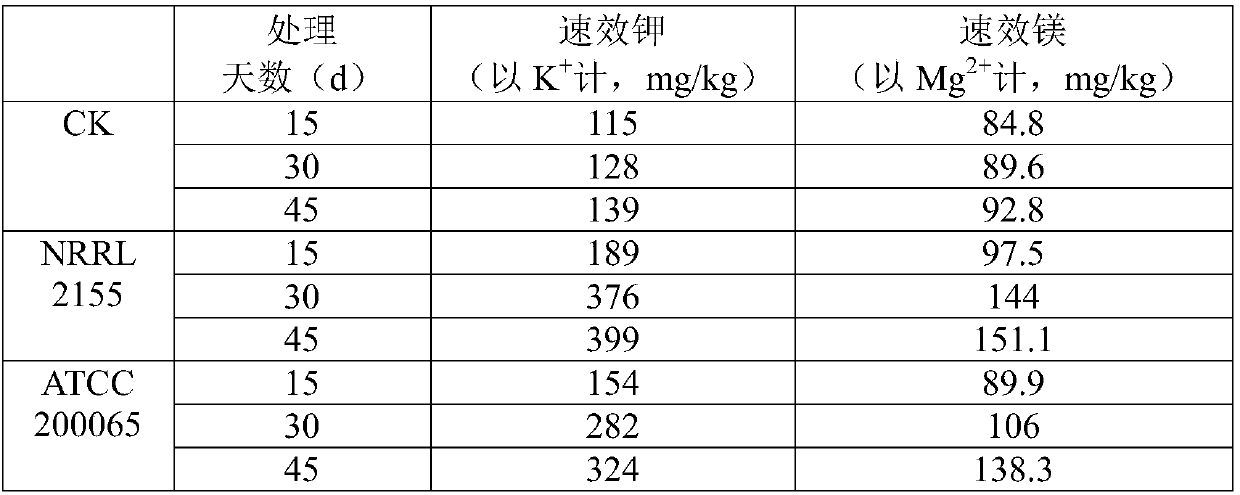Application of thermophilic bacteria in fertility improvement and potassium fertilizer and magnesium fertilizer content increase
A technology of fungi and soil fertilizers, applied in the direction of organic fertilizers, etc., can solve the problems of soil acidification, reduction of soil organic matter content, damage to soil structure, etc.
- Summary
- Abstract
- Description
- Claims
- Application Information
AI Technical Summary
Problems solved by technology
Method used
Image
Examples
Embodiment 1
[0037] Cultivation of Example 1 The Cultivation of Thermomyces dupontii NRRL 2155 and Thermomyces lanuginosus ATCC 200065
[0038] Thermomyces dupontii NRRL 2155 and Thermomyceslanuginosus ATCC 200065 were respectively activated in PDA solid medium at 45°C for 3 days. 2 Bacterial blocks of different sizes were inoculated into 500mL Erlenmeyer flasks filled with 250mL PDB medium, 45°C, 160r min -1 Cultivate on a shaking table for 7 days to obtain Dupont thermophilic spore liquid and cotton chamomile thermophilic spore liquid.
Embodiment 2
[0039] The composting treatment of embodiment 2 high-temperature fungus
[0040] The above two spore liquids that have been fermented are mixed with humus respectively and composted, and 1g of humus is added to 100 μL of the fermentation broth of the two bacterial strains in Example 1, namely, 100 μL of 10 8 cfu mL -1 The spore suspension was placed in an incubator at 45°C for 15d, 30d and 45d respectively. During the whole process, 500μl of deionized water was added to 1g of the humus soil mixture at intervals of 24h to maintain the water content. Add the same amount of PDB medium to the humus soil and treat it for different days under the same conditions as the negative control group.
Embodiment 3
[0041] The composting treatment of embodiment 3 high-temperature fungus
[0042] The above two spore liquids that have been fermented are mixed with humus respectively and composted, and 1g of humus is added to 100 μL of the fermentation broth of the two bacterial strains in Example 1, namely, 100 μL of 10 9 cfu mL -1 The spore suspension was placed in an incubator at 40°C, 45°C and 50°C for 30 days. During the whole process, at intervals of 48 hours, 750 μl of deionized water was added to 1 g of humus soil mixture to maintain the water content. Add the same amount of PDB medium to the humus soil and treat it at different culture temperatures for 30 days as a negative control group.
PUM
| Property | Measurement | Unit |
|---|---|---|
| diameter | aaaaa | aaaaa |
Abstract
Description
Claims
Application Information
 Login to View More
Login to View More - Generate Ideas
- Intellectual Property
- Life Sciences
- Materials
- Tech Scout
- Unparalleled Data Quality
- Higher Quality Content
- 60% Fewer Hallucinations
Browse by: Latest US Patents, China's latest patents, Technical Efficacy Thesaurus, Application Domain, Technology Topic, Popular Technical Reports.
© 2025 PatSnap. All rights reserved.Legal|Privacy policy|Modern Slavery Act Transparency Statement|Sitemap|About US| Contact US: help@patsnap.com



